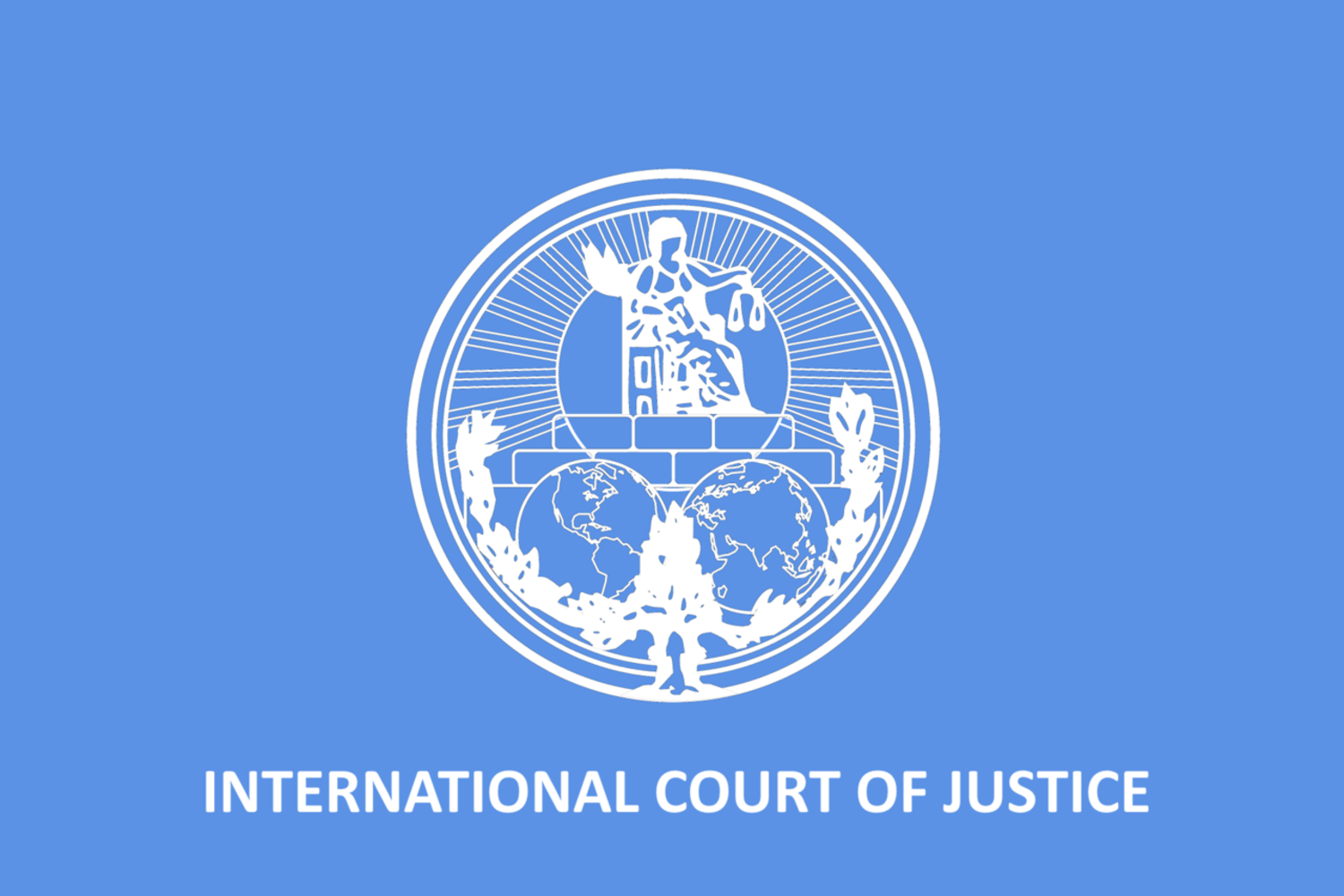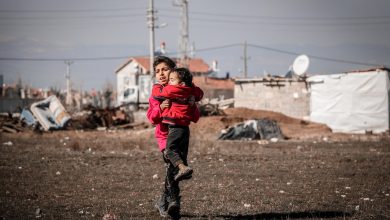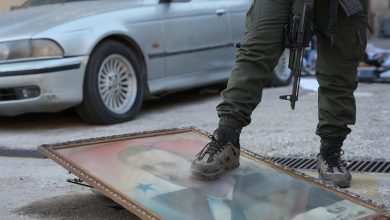Views: Legal Challenges to Describing Israeli Crimes in Gaza as Genocide

Citation: Guellali, Amna (2024) ‘Views: Legal Challenges to Describing Israeli Crimes in Gaza as Genocide’, Rowaq Arabi 29 (1), pp. 80-87, DOI: 10.53833/QAQZ1356.
Since the attack perpetrated by Hamas on 7 October 2023 and the exceptionally brutal Israeli response, there has been ongoing controversy over whether crimes of genocide are being committed against Palestinians in the Gaza Strip. On 15 October, more than 800 academics signed a public statement warning of the ‘risk of genocide’ in Gaza.[1] Independent United Nations experts have also sounded the alarm, describing the events in Gaza as ‘a genocide in the making’ and calling on the countries concerned to prevent it.[2] The same question was addressed by Israeli historian Raz Segal, a specialist on the Holocaust, on 13 October; Segal detailed what was in his view undeniable evidence of the commission of the crime of genocide against Palestinians.[3] Several lawyers and NGOs have also submitted filings with Karim Khan, the prosecutor for the International Criminal Court (ICC), requesting him to open an investigation into genocide, which is the first step towards the criminal prosecution of senior Israeli officials involved.[4] On 29 December 2023, the state of South Africa petitioned the International Court of Justice for provisional measures against Israel in view of what it described as ‘acts of genocide against the Palestinian people’ in the Gaza Strip.[5]
The Israeli army has committed, and continues to commit, many crimes in the Gaza Strip, some of which are well documented, including the use of disproportionate force, the targeting of protected sites such as hospitals and schools, the destruction of residential neighbourhoods, siege, and the use of starvation as a weapon of war, all of which constitute war crimes and crimes against humanity. However, the crime of genocide garners more attention due to the considerable symbolic potency of the word.
In a world where war crimes and even crimes against humanity are shrugged off, the crime of genocide continues to provoke condemnation. Since Polish jurist Raphael Lemkin first coined the term in 1944,[6] international courts have criminalised genocide to protect human diversity—that is, to prevent the destruction of entire groups of people, which results in the loss of humanity’s cultural and social wealth.[7] The UN General Assembly has described the crime of genocide as ‘a denial of the right of existence of entire human groups, as homicide is the denial of the right to live of individual human beings’, adding that such denial ‘shocks the conscience of mankind’.[8] In addition to the image of mass murder evoked by the term in the minds of non-specialists, the specificity of the crime of genocide, which distinguishes it from other human rights violations, is that at its core it conveys the concept of the extermination of entire groups. The international definition of genocide, which has remained constant since the adoption of the Convention on the Prevention and Punishment of the Crime of Genocide in 1948, refers to a set of acts committed ‘with intent to destroy, in whole or in part, a national, ethnical, racial or religious group, as such’.[9] In this definition, every word counts, and they have been explained and interpreted at length by international tribunals.
The key aspect of the crime revolves entirely around the phrase ‘intent to destroy’. International jurisprudence holds that even if massacres are committed against entire population groups, even if large-scale killings are committed, and even if atrocities are documented in wars or other conflict situations, we can only speak of genocide if there is evidence of intent to destroy a group. In other words, the crime of genocide is not constituted only by the number of victims, but further requires an examination of the perpetrators’ state of mind and an analysis of their motives. This question of intent, which remains vague and not immediately comprehensible, has thus become the subject of a legal and political debate about Israeli crimes in Gaza. In the case of Gaza, more than anywhere else, the debate over genocide is undoubtedly a political debate between clashing narratives, between those who see the genocide against Jews as unique and so refuse to apply the term ‘holocaust’ or genocide to what is happening to Palestinians and those who point to the context of the crime and the need to characterise the massacres in Gaza as genocide or holocaust. The fact that the origin of genocide as a concept is so closely associated with the Nazi extermination of Jews during the Second World War raises the question of whether the descendants of Holocaust survivors can become architects of a genocidal project against another people. That is, it raises the question of whether there is evidence that they have an intention to destroy the Palestinians as a national group, which is distinct from evidence of their desire to kill and displace Palestinians, destroy their homes and cities, eliminate any possibility of future life on their lands, or erase all traces of their civilisation, all of which are very clear intentions.
Remarkably, the descendants of victims of a past genocide now find themselves on the other side of the equation, even as they deny this reversal. In fact, many voices are asserting that this is not a genocide. It is a burning political issue in France, for example, where the president of the regional council of Île-de-France, Valérie Pécresse, recently decided to withdraw the Simon Veil Prize from journalist Zineb El Rhazoui, previously with Charlie Hebdo, because she retweeted an American journalist comparing the Nazi genocide with what he saw as the Zionist genocide in Gaza.[10] In Germany, the Heinrich Böll Foundation, associated with the German Green Party, in agreement with the senate in Bremen, announced that it was cancelling the Hannah Arendt Prize for Political Thought given to Jewish journalist Masha Gessen, who had explored the similarity between the persecution of Jews in Eastern Europe and that of Palestinians in Gaza in a New Yorker article titled ‘In the Shadow of the Holocaust’.[11] It seems that any comparison between the fate of the Jews and the Palestinians is taboo in official discourse and politics in some European countries. For this reason, the ‘correct’ legal characterisation of the facts is of paramount importance, for it brings to the forefront the reality of the Palestinians, embedding it in a material history that has been obscured by the historical and psychological rigidity surrounding Holocaust memory.
Interpretation of ‘Intent to Destroy’ in International Law
Although the crime of genocide is considered ‘the crime of crimes’, in the words of the International Criminal Tribunal for Rwanda (ICTR),[12] exemplifying the horror of mass murder, it has been relatively little cited in international jurisprudence. For example, we had to wait until 1998 for the first international conviction for genocide, in the case of Jean Paul Akayesu before the ICTR.[13] Other courts, such as the International Criminal Tribunal for the Former Yugoslavia (ICTY), handed down convictions for the crime of genocide in the Srebrenica case, involving the killing of more than 7,000 Bosnian men by Serbian armed forces in 1995. These rare examples demonstrate the difficulty of legally proving genocide. Over the past twenty years, prosecutors at the ICC, which has jurisdiction to prosecute individuals for war crimes, crimes against humanity, and genocide, have issued arrest warrants for genocide only in the case of former Sudanese President Omar al-Bashir, in 2008, compared to more than thirty-one arrest warrants for war crimes and crimes against humanity since 2003.[14]
Although ‘intent to destroy’ seems at first glance highly subjective, requiring as it does an examination of motives, international courts have nevertheless given an objective interpretation of it, relying on several concrete elements to determine whether the essence of the crime of genocide—the intent to destroy—is actually present.
First, courts consider the existence of a general plan leading to genocide as one piece of evidence for the crime. This element is about the existence of a policy of genocide shared by many perpetrators. In other words, this element takes us from the subjectivity of a specific intention harboured by a specific party to a policy undergirding the commission of the crime.[15]
Second, with regard to the evidence necessary to prove intent, several courts have held that intent can be inferred from circumstantial evidence, meaning that the commission of a crime can be inferred from the circumstances surrounding the event rather than by direct evidence.[16] In fact, courts recognise that, for genocide, ‘Explicit manifestations of criminal intent are, for obvious reasons, often rare in the context of criminal prosecutions’.[17] Therefore, inferring the intention from the relevant circumstances and facts ‘prevent[s] perpetrators from escaping convictions simply because such manifestations are absent’.[18] In one case, the ICTR Trial Chamber acknowledged ‘the difficulty in finding explicit manifestations of a perpetrator’s intent’ before holding that ‘the perpetrator’s actions, including circumstantial evidence […] may provide sufficient evidence of intent’. According to the court, intent ‘may be demonstrated by a pattern of purposeful actions and inferred either from words and deeds’.[19]
The ICTY held that evidence of a specific intent may include but is not limited to the overall context, the scale of atrocities, the systematic targeting of victims because of their membership in a particular group, the use of derogatory language towards members of the target group, other deplorable acts systematically directed against the group itself, or recurrent destructive and discriminatory acts.[20] Nevertheless, the scope for interference from circumstances and facts is not without limits. In the case of Omar al-Bashir, for example, the ICC Trial Chamber set a very high standard, agreeing to infer genocidal intent from circumstantial evidence only when no other plausible conclusion could be drawn from the facts. The same chamber also affirmed that ‘if the government of Sudan’s genocidal intent is only one of several plausible inferences that can be drawn from the material presented by the prosecution, it should be dismissed’.[21] Although the prosecutor provided extensive evidence of the targeting of particular ethnic groups in Darfur— namely, the Fur, Masalit, and Zaghawa—the Trial Chamber considered this evidence insufficient to establish genocidal intent since the conditions of war and fighting contributed to the commission of the crimes.[22] In the same case, the ICC Appeals Chamber considered the standard established by the lower court (that genocidal intent must be the sole plausible inference from the facts) to be flawed at that point in the litigation. Accordingly, it ruled to overturn the Trial Chamber’s decision and grant the prosecutor’s request for a warrant against Omar al-Bashir for the crime of genocide.[23] This argument, if anything, shows that proving genocidal intent through inference is subject to the court’s discretion and shifts depending on facts and circumstances.
In the same context, international criminal tribunals have held genocidal intent may be inferred from the scale and circumstances of the commission of war crimes and crimes against humanity. In the case of Omar al-Bashir, the ICC prosecutor presented numerous arguments regarding other crimes committed by the government of Sudan against ethnic groups in Darfur, including massacres, systematic rapes, the use of starvation as a weapon of war, torture, and the denial of access to humanitarian aid.[24]
International jurisprudence has similarly held that genocidal intent can be inferred from plans for displacement and ethnic cleansing. The ICTY, for instance, ruled:
The forcible transfer of women, children and the elderly is a manifestation of the specific intent to rid the Srebrenica enclave of its Bosnian Muslim population. The manner in which the transfer was carried out—though force and coercion, by not registering those who were transferred, by burning the houses of some of the people, sending the clear message that they had nothing to return to, and significantly, through its targeting of literally the entire Bosnian Muslim population of Srebrenica, including the elderly and children—clearly indicates that it was a means to eradicate the Bosnian Muslim population from the territory where they had lived.[25]
Circumstantial Evidence for Genocide in Gaza
I would now like to bring some of this international jurisprudence to bear on the events taking place in Gaza. In order to determine whether the crime of genocide is being committed against the Palestinians, we must resort to proof by inference, as developed by international courts. Words and deeds can thus be indicative of genocidal intent.
In the days after 7 October, speech in Israel—in essence, hate speech—did not distinguish between the perpetrators of the crimes in Israel and the Palestinian people as a whole. These words can generally be described as suggestive of genocidal intent. Senior Israeli state officials gave multiple statements indicating a genocidal desire to destroy part of the Palestinian population, i.e., the population of Gaza, and state officials used language that dehumanised Palestinians.
On 9 October, Israeli Defence Minister Yoav Gallant said, ‘We are fighting human animals and we are acting accordingly’,[26] noting that Israel is heading towards a ‘large-scale response’ and had ‘removed all restrictions’ on Israeli forces. He added: ‘Gaza will not return to what it was before. We will level everything’.[27] On 10 October, the head of the Israeli army’s Coordinator of Government Activities in the Territories, Major General Ghassan Alian, sent a direct message to the residents of Gaza: ‘Kidnapping, abusing and murdering children, women and elderly people is not human. There is no justification for that. Hamas has turned to ISIS, and the residents of Gaza, instead of being appalled, are celebrating […] Human animals must be treated as such. There will be no electricity and no water [in Gaza], there will only be destruction. You wanted hell, you will get hell’.[28] On the same day, Israeli military spokesman Daniel Hagari implicitly acknowledged the unjustified and deliberately destructive nature of Israel’s bombing campaign in Gaza, saying: ‘Right now we’re focused on what causes maximum damage’, not precision.[29] This suggests the intent to destroy and bespeaks a military response that does have even minimal respect for civilians.
In the same context, Israeli President Isaac Herzog stressed that the Israeli authorities hold the entire Palestinian population in Gaza responsible for the actions of armed groups. Accordingly, they are subject to collective punishment and unlimited use of force. Herzog explained: ‘It is an entire nation out there that is responsible. It is not true this rhetoric about civilians not being aware, not involved. It’s absolutely not true’.[30] Israeli Energy and Infrastructure Minister Yisrael Katz added: ‘All the civilian population in Gaza is ordered to leave immediately. We will win. They will not receive a drop of water or a single battery until they leave the world’.[31]
International jurisprudence has established that the scale of killing and destruction can also be taken as evidence of genocidal intent. According to statistics released as of this writing, over 26,637 people had been killed in Gaza, including over 10,000 children, while over 65,387 had been injured.[32] According to statistics compiled by Save the Children, more children were killed during the first twenty-one days of the war in Gaza than have been killed annually in armed conflicts around the world since 2019.[33] A senior UN official went so far as to call Gaza a ‘graveyard for children’.[34]
The level of destruction caused by Israeli shelling is also staggering: according to the UN, more than 52,000 homes have been destroyed and more than 250,000 partially damaged, accounting for more than sixty per cent of the housing stock in the Gaza Strip.[35] According to several media outlets, the methods of warfare employed by the Israeli army contribute to this destruction and show a wanton disregard for civilian casualties.[36] Such methods include expanded authorisation to bomb non-military targets, the easing of restrictions on anticipated civilian casualties, and the use of an AI system to generate more potential targets.[37]
A key element of the genocidal campaign waged by the Israeli government is the subjection of a large part of the population to unbearable living conditions in the Gaza Strip as a result of the blockade imposed since 11 October. This recently prompted the UN to warn of a famine. According to Oxfam, only two per cent of the food needed for survival has entered Gaza.[38] On 6 December, the World Food Programme reported that ninety per cent of families in northern Gaza and nearly sixty-six per cent of families in southern Gaza have spent at least a full day and night without food.[39] On 22 December, UNICEF issued a statement warning that all children under the age of five in the Gaza Strip—335,000 children—were at risk of severe malnutrition and death as a result of acute food insecurity.[40]
The above evidence indicates that there are serious grounds to believe Israeli leaders harbour an intent to commit genocide against Palestinians in Gaza. Despite the difficulty of proving the crime of genocide, the fact is that Palestinians need justice, first and foremost by accurately naming what they are experiencing. Our ability to classify what is happening in Gaza as genocide, along with war crimes and crimes against humanity, makes clear the atrocities and helps bring them to an end. Since the partition of Palestine in 1948, Palestinians have been denied their rights in the name of the genocide of the Jews of Europe. Their suffering always seems to be the price that must be paid for salvation from the memory of this heinous extermination, which continues to haunt European politics. Naming what is happening in Palestine as genocide means bringing events into the realm of material history and discarding the systematic sanctification of consciousness that establishes a racial hierarchy of victims.
This article is originally written in Arabic for Rowaq Arabi.
[2] UN Office of the High Commissioner for Human Rights (2023) ‘Gaza: UN Experts Call on International Community to Prevent Genocide against the Palestinian People’, 16 November, accessed 8 January 2024, https://www.ohchr.org/en/press-releases/2023/11/gaza-un-experts-call-international-community-prevent-genocide-against.
[3] Segal, Raz (2023) ‘A Textbook Case of Genocide’, Jewish Currents, 13 October, accessed 8 January 2024, https://jewishcurrents.org/a-textbook-case-of-genocide.
[4] Human Rights League of France (2023) ‘Plainte pour Génocide Présentée à la Cour Pénale Internationale (CPI) le Jeudi 9 Novembre 2023’, 15 November, accessed 8 January 2024, https://shorturl.at/apsLV.
[5] International Court of Justice (2023) ‘The Republic of South Africa Institutes Proceedings against the State of Israel and Requests the Court to Indicate Provisional Measures’, 29 December, accessed 8 January, https://www.icj-cij.org/sites/default/files/case-related/192/192-20231229-pre-01-00-en.pdf.
[6] Lemkin, Raphael (1944) Axis Rule in Occupied Europe, https://gallica.bnf.fr/ark:/12148/bpt6k9443228/f66.item.
[7] ICTY (2004), Prosecutor v Radislav Krstic (Appeals Chamber), 19 April, accessed 8 January 2024, https://www.icty.org/x/cases/krstic/acjug/en. The court said in its judgment: ‘Among the grievous crimes this Tribunal has the duty to punish, the crime of genocide is singled out for special condemnation and opprobrium. The crime is horrific in its scope; its perpetrators identify entire human groups for extinction. Those who devise and implement genocide seek to deprive humanity of the manifold richness its nationalities, races, ethnicities and religions provide. This is a crime against all of humankind, its harm being felt not only by the group targeted for destruction, but by all of humanity’.
[8] UN General Assembly (1946), Resolution 96 (I), fifty-fifth plenary meeting, 11 December, accessed 3 January 2024, https://digitallibrary.un.org/record/209873.
[9] Acts that constitute genocide under the Genocide Convention, are: 1) killing members of the group; 2) causing serious bodily or mental harm to members of the group; 3) deliberately inflicting on the group conditions of life calculated to bring about its physical destruction in whole or in part; 4) imposing measures intended to prevent births within the group; and 5) forcibly transferring children of the group to another group.
[10] Le Parisien (2023) ‘Valérie Pécresse Retire le Prix Simone-Veil à Zineb El Rhazoui, ex-Journaliste de Charlie Hebdo’, 10 December, accessed 3 January, https://shorturl.at/dmLT7.
[11] Sheehan, Dan (2023) ‘Masha Gessen’s Hannah Arendt Prize Has Been Canceled Because of Their Essay on Gaza’, Literary Hub, 13 December, accessed 8 January 2024, https://lithub.com/masha-gessens-hannah-arendt-prize-has-been-cancelled-because-of-their-essay-on-gaza.
[12] International Criminal Tribunal for Rwanda (1998) The Prosecutor v. Jean Kambanda, 4 September, case no. ICTR 97-23-S, accessed 8 January 2024, https://ucr.irmct.org/LegalRef/CMSDocStore/Public/English/Judgement/NotIndexable/ICTR-97-23/MSC14050R0000529818.PDF.
[13] United Nations (1998) ‘Une Premiere dans l’Histoire: Akayesu Reconnu Coupable de Genocide par le Tribunal Criminel International pour le Rwanda’, 3 September, accessed 8 January 2024, https://press.un.org/fr/1998/19980903.afr94.html.
[14] International Criminal Court, list of cases, accessed 3 December 2024, https://shorturl.at/IZ258.
[15] The Appeals Chamber of the International Criminal Tribunal for the former Yugoslavia stated that the existence of a plan or policy is not a ‘legal ingredient’ per se of the crime of genocide, but proving the existence of such a plan or policy may help to prove the crime of genocide. See: ICTY, Prosecutor v Radislav Krstic, 19 April 2004, para. 225, accessed 3 January 2024, https://www.icty.org/x/cases/krstic/acjug/en/.
[16] See, for example: ICTY (1999) The Prosecutor v. Goran Jelisic (Trial Chamber), case no. IT-95-10-A, para. 47, 5 July, https://www.icty.org/x/cases/jelisic/tjug/en/; within the academic community, there is a debate between those who insist that a plan for genocide is an element of the crime and others who deny it. See: Cupido, Marjolein (2014) ‘The Contextual Embedding of Genocide: A Casuistic Analysis of the Interplay between Law and Facts’, Melbourne Journal of International Law 13, https://law.unimelb.edu.au/__data/assets/pdf_file/0008/1586879/Cupido1.pdf.
[17] ICTR (2001) Prosecutor v. Clément Kayishema and Obed Ruzindana (Appeals Chamber), 1 June, https://shorturl.at/emMQ3.
[18] ICTR (2003) Prosecutor v. Georges Anderson Nderubemwe Rutaganda, 26 May, case no. ICTR-96-3-T, para. 525, accessed 5 February 2024, https://shorturl.at/cnoFJ.|
[19] ICTR (2001).
[20] ICTY (2001) Prosecutor v. Goran Jelisic (Appeals Chamber), case no. IT-95-10-A, para. 47, https://cld.irmct.org/assets/filings/Judgement-Jelisic.pdf.
[21] ICC (2009) Le Procureur c. Omar Hassan Ahmad Al Bashir (‘Omar Al Bashir’) (Preliminary Chamber 1), case no. ICC-02/05-01/09, 4 March, https://www.icc-cpi.int/sites/default/files/CourtRecords/CR2010_00810.PDF.
[22] Ibid.
[23] ICC (2010) Qarar bi-Sha’n Talab al-Iddi‘a’ Isdar Amr bi-l-Qabd ‘ala ‘Umar Hasan Ahmad al-Bashir (Ruling on the Prosecutor’s Motion for an Arrest Warrant for Omar al-Bashir) (Appeals Chamber), 3 February, accessed 8 January 2024, https://www.icc-cpi.int/sites/default/files/CourtRecords/CR2012_00934.PDF.
[24] ICC (2009).
[25] ICTY (2005) Prosecutor v. Vidoje Blagojević [and] Dragan Jokić (Trial Chamber 1, Section A), 17 January, para. 675, accessed 3 January 2024, https://www.icty.org/x/cases/blagojevic_jokic/tjug/en/bla-050117e.pdf.
[26] Times of Israel (2023) ‘Wazir al-Difa‘ al-Isra’ili Ya’mur bi-Fard “Hisar Kamil” ‘ala Ghazza’ (Israeli Defence Minister Orders ‘Full Siege’ of Gaza), 9 October, accessed 8 January 2024, https://shorturl.at/krFL9.
[27] Fabian, Emanuel (2023) ‘Ghalant: Isra’il Tabda’ Hujuman Kamilan ‘ala Ghazza wa-Lan Ta‘ud Abadan ila Ma Kanat ‘alayh min Qabl’ (Gallant: Israel Begins Full-Scale Assault on Gaza and It Will Never Go Back to the Status Quo Ante), Times of Israel, 11 October, accessed 8 January 2024, https://shorturl.at/msMXZ.
[28] Pacchiani, Gianluca (2023) ‘COGAT Chief Addresses Gazans: “You Wanted Hell, You Will Get Hell”’, Times of Israel, 10 October, accessed 8 January 2024, https://www.timesofisrael.com/liveblog_entry/cogat-chief-addresses-gazans-you-wanted-hell-you-will-get-hell/.
[29] McKernan, Bethan (2023) ‘“We’re Focused on Maximum Damage”: Ground Offensive into Gaza Seems Imminent’, Guardian, 10 October, accessed 4 January 2024,
https://www.theguardian.com/world/2023/oct/10/right-now-it-is-one-day-at-a-time-life-on-israels-frontline-with-gaza.
[30] Blumenthal, Paul (2023), ‘Israeli President Suggests That Civilians In Gaza Are Legitimate Targets’, HuffPost, 13 October, https://www.huffpost.com/entry/israel-gaza-isaac-herzog_n_65295ee8e4b03ea0c004e2a8.
[31] Katz, Israel (2023), tweet on his personal account on X, 13 October, https://twitter.com/Israel_katz/status/1712876230762967222.
[32] UN Office for the Coordination of Humanitarian Affairs (2024) ‘Hostilities in the Gaza Strip and Israel: Flash Update 68’, 13 December, accessed 8 January 2024,
https://www.ochaopt.org/content/hostilities-gaza-strip-and-israel-flash-update-68.
[33] Save the Children (2023) ‘Gaza: 3,195 Children Killed in Three Weeks Surpasses Annual Number of Children Killed in Conflict Zones since 2019’, 29 October, accessed 8 January 2024,
https://www.savethechildren.net/news/gaza-3195-children-killed-three-weeks-surpasses-annual-number-children-killed-conflict-zones.
[34] UN (2023) ‘Guterres: “Gaza Is Becoming a Graveyard for Children”’, 7 November, accessed 4 January, https://shorturl.at/lvyUX.
[35] UN Office for the Coordination of Humanitarian Affairs (2024) ‘Hostilities in the Gaza Strip and Israel: Flash Update 105’, 29 January, accessed 5 February 2024, https://shorturl.at/iqQ06 .
[36] Abraham, Yuval (2023) ‘“A Mass Assassination Factory”: Inside Israel’s Calculated Bombing of Gaza’, 972 Magazine, 30 November, https://www.972mag.com/mass-assassination-factory-israel-calculated-bombing-gaza/.
[37] Davies, Harry, Bethan McKernan, and Dan Sabbagh (2023) ‘“The Gospel”: How Israel Uses AI to Select Bombing Targets in Gaza’, Guardian, 1 December, accessed 8 January,
https://www.theguardian.com/world/2023/dec/01/the-gospel-how-israel-uses-ai-to-select-bombing-targets.
[38] Oxfam (2023) ‘Starvation as a Weapon of War Being Used against Gaza Civilians: Oxfam’, 25 October, accessed 8 January 2024, https://www.oxfam.org/en/press-releases/starvation-weapon-war-being-used-against-gaza-civilians-oxfam.
[39] World Food Programme (2023) ‘Gaza on the Brink as One in Four Face Extreme Hunger’, 20 December, accessed 8 January 2024, https://www.wfp.org/stories/gaza-brink-one-four-people-face-extreme-hunger.
[40] UNICEF (2023) ‘Statement by UNICEF on the Risk of Famine in the Gaza Strip’ 22 December, accessed 8 January 2024, https://www.unicef.org/press-releases/statement-unicef-risk-famine-gaza-strip.
Read this post in: العربية





